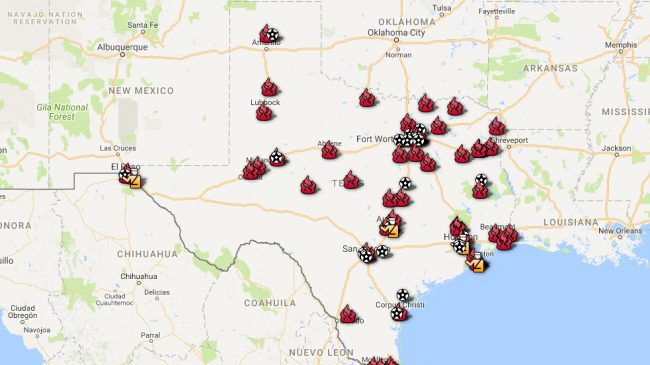Although most Texas public employee pensions are managed by statewide systems, the Lone Star state also has more than 80 single employer plans. Some of these locally managed systems are seriously underfunded, and those outside major media markets like Houston and Dallas-Ft. Worth may fly under the radar screen.
To help Texans see how nearby public plans are performing, we built a map of Texas’ local pension systems using data provided by the Texas Pension Review Board (PRB). We used different icons to distinguish between police pension systems, fire pension systems, and other systems. You can click on an icon to see key data points about each system. Because some cities have multiple plans, you may need to zoom in to reach all the icons.
There are three single-employer local plans in Texas with funded ratios below 40 percent, according to the PRB data. All three of these local plans cover firefighters. Two of the systems — those covering Paris and Plainview firefighters — are relatively small, each with 50 or fewer active employees. While small from a state or national perspective, these underfunded plans could have significant budget implications for the cities that administer them. Further, because the Paris plan discounts its liabilities at an unrealistic 8 percent rate, its underfunding is even more serious than PRB’s numbers suggest.
The third deeply underfunded fire plan belongs to Odessa. PRB shows that the system has $43 million in assets (at market value) and $111 million in liabilities as of 2015. A more recent actuarial report shows liabilities growing to almost $115 million at the end of 2016 before the city implemented reforms.
As of January 1, 2017, the benefit accrual rate was reduced from 3.6 percent to 2.88 percent per year, benefits were capped at 72 percent of final compensation and Cost of Living Adjustments (COLAs) on new benefit accruals were discontinued. These and other changes reduced actuarially accrued liabilities by $8.5 million. Further, to start paying down the remaining unfunded liabilities, member contribution rates were increased by 3 percent of salary and the city’s rate was increased by 4 percent. These are steps in the right direction, but it remains to be seen whether they will be sufficient.
The PRB data shows that many other Texas local systems face severe funding gaps. We will discuss some of those systems in future posts.
Stay in Touch with Our Pension Experts
Reason Foundation’s Pension Integrity Project has helped policymakers in states like Arizona, Colorado, Michigan, and Montana implement substantive pension reforms. Our monthly newsletter highlights the latest actuarial analysis and policy insights from our team.

